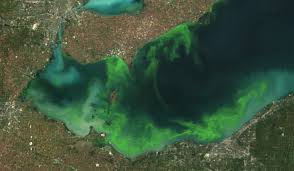Scientists Now Know What’s Causing Lake Erie’s Algae Problem
Theory about fertilizer turns out to be correct but solution isn’t that simple

Scientists have identified the source of the annual algal bloom in Lake Erie. Water quality managers have speculated for years that fertilizer from farms along the western basin of Lake Erie have created the potentially harmful blooms. But a report released Tuesday by the International Joint Commission, a group of scientists and others from the U.S. and Canada, verifies the impact of agricultural run-off. I-J-C Great Lakes Regional Office Scientist Matthew Child says knowing the source should help develop agricultural practices to mitigate phosphorus run-off in the future.
“It’s just and affirmation that the biggest, largest, single source we need to get a handle on is the agricultural fraction and within the agricultural fraction, this report provides a little bit more resolution to activities that address both fertilizer and manure” Matthew Child, International Joint Commission, Windsor, ON
Child says it appears that farmers are not overusing fertilizer but he says the way it is applied is directly related to how much run-off ends up in the lake. In 2014 the algal bloom forced the City of Toledo to temporarily shut-down its municipal water system. Water quality and other conditions in the western basin are closely monitored and Childs says that’s helping.
“The western basin of Lake Erie is as good as it gets. There is no other place in the basin where there’s such a highly evolved suite of monitoring programs. That said, there’s still a lot of work to be done. We found there’s many instances where coordination could be improved”
Child says the problem is also related to excessive fertilizer use during the 1980’s and more recent changes to the way the soil is tilled and drained.
Click on the audio link above to hear the entire conversation with Matthew Child and WDET’s Amy Miller


